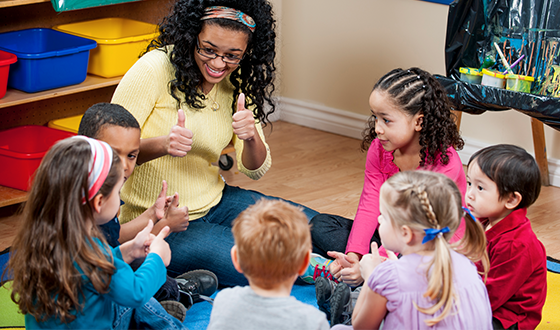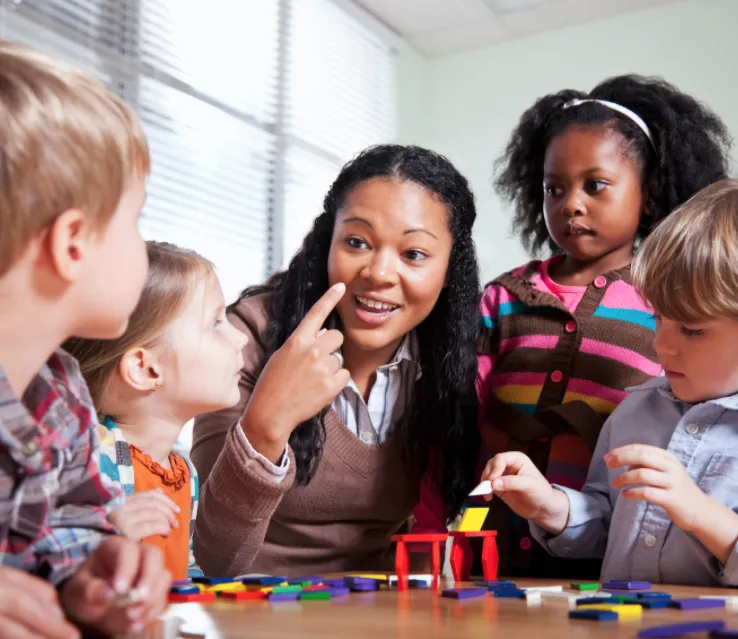Getting Started with Social-Emotional Development


The real development and transformation happens when both teachers and children grow together.
When I worked in a large, diverse metropolitan school district, I had a colleague who struggled with correctly pronouncing several of the children’s names. His solution was to create nicknames for those children. There was no malice or ill intent in his practice, and he would often point out that as a specialist teacher he had to remember the name of every single child in the entire school. It’s safe to say that most would agree that the excuse didn’t justify this practice. Before all other things, a teacher’s primary responsibility is to create an environment where every child feels cared for, seen, and welcomed. This starts by respecting each child as an individual with a range of experiences and feelings.
In order to do this, teachers must first work to develop their own social–emotional competence. They need to be aware of their own emotions and how these emotions can impact the learning environment. Teachers must recognize that their own feelings shape the interactions they have with children each day. Teachers must be vulnerable enough to ask questions such as “Why am I acting this way?” and “Why does this specific behavior trigger negative emotions within me?” In order to support the social–emotional development of children, teachers should take time to reflect on their emotions and identify their own feelings—not just the ones that are obvious but also those feelings that are hidden.
The pandemic’s enormous disruption to normality has driven many education and mental health care experts to raise the social–emotional flag, almost pleading for teachers to focus on children’s social–emotional development and learning when they return to the classroom. There are countless articles in education journals and national news stating that teachers should expect that young learners may return to classrooms and programs with fears and anxieties and possibly dealing with the effects of trauma. In response to this, school districts, private childcare, and Head Start programs are racing to find a social–emotional curriculum for teachers to begin implementing in the new school year.
Supporting Educators’ Social–Emotional Development
However, it is not enough to purchase a social–emotional curriculum simply to check a box, even one that is researched-based. In order to effectively implement it, it “really requires leadership and ongoing support,” as Mark Greenberg, a professor of human development and psychology at Pennsylvania State University and a founder of the Collaborative for Academic, Social, and Emotional Learning (CASEL), told EducationWeek last year.1 That seems logical. We all know that providing professional development and coaching is the most effective way to support an adult learner in using a new resource, but professional development and ongoing support are even more essential to social–emotional development. As my story illustrates, not all teachers are equipped to provide children with social–emotional support, even without the additional needs and challenges of the pandemic.
“Actively supporting the social and emotional development of students is not an innate skill. Veteran teachers are not used to some of these practices, and many new teachers didn’t learn these skills in their teacher-preparation programs.” Even the kindest and most loving of teachers need to learn strategies like helping children brainstorm solutions to problems and learn to identify, name, and manage their strong feelings.
“Teaching is an emotional practice,” according to Lorea Martinez, faculty member of Columbia University’s Teachers College.2 When teachers recognize their internal motivators, they are better able to “use their emotional intelligence to improve [their] craft.2 When teachers have a better understanding of who they are, it will help them have more empathy for children and respond to them in a calm, positive manner. This helps teachers develop social trust, leading children to feel respected, valued, and understood.
The lessons taught in a social–emotional curriculum are important, but they are just one small part of the equation. Between the lessons is when real growth, development, and work take place: when both children and teachers grow.

Intentional Interactions: Social-Emotional Development in Everyday Experiences
In this four-part webinar series, educators and administrators will discuss the value of social–emotional development and learn simple yet effective strategies for promoting protective factors and resiliency in young children.
[1] Will, M. (2020). The success of social–emotional learning hinges on teachers. EducationWeek. Retrieved May 18, 2021, from https://www.edweek.org/leadership/the-success-of-social-emotional-learning-hinges-on-teachers/2020/04
[2] Martinez, L. (2015, November). Developing teachers’ social and emotional skills. Edutopia. https://www.edutopia.org/blog/developing-teachers-social-emotional-skills-lorea-martinez